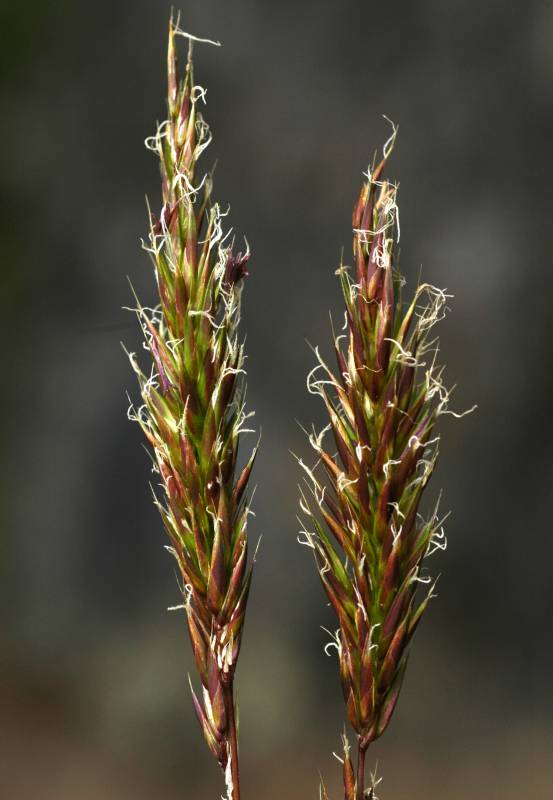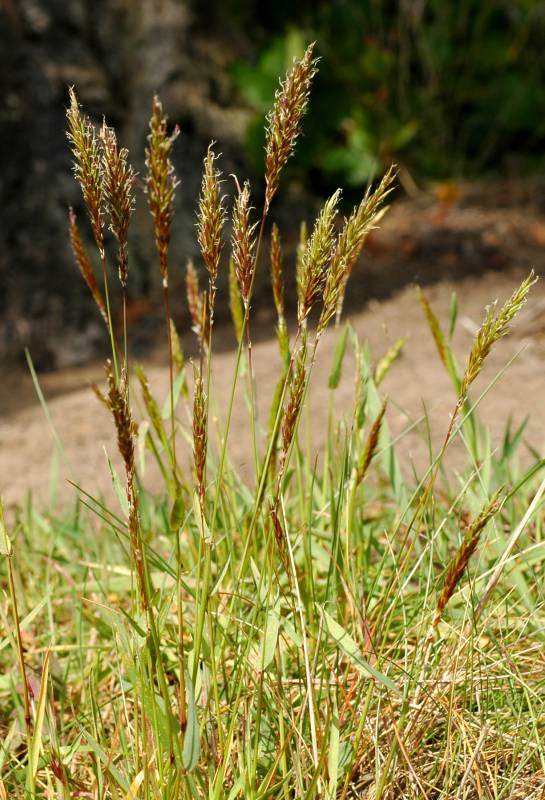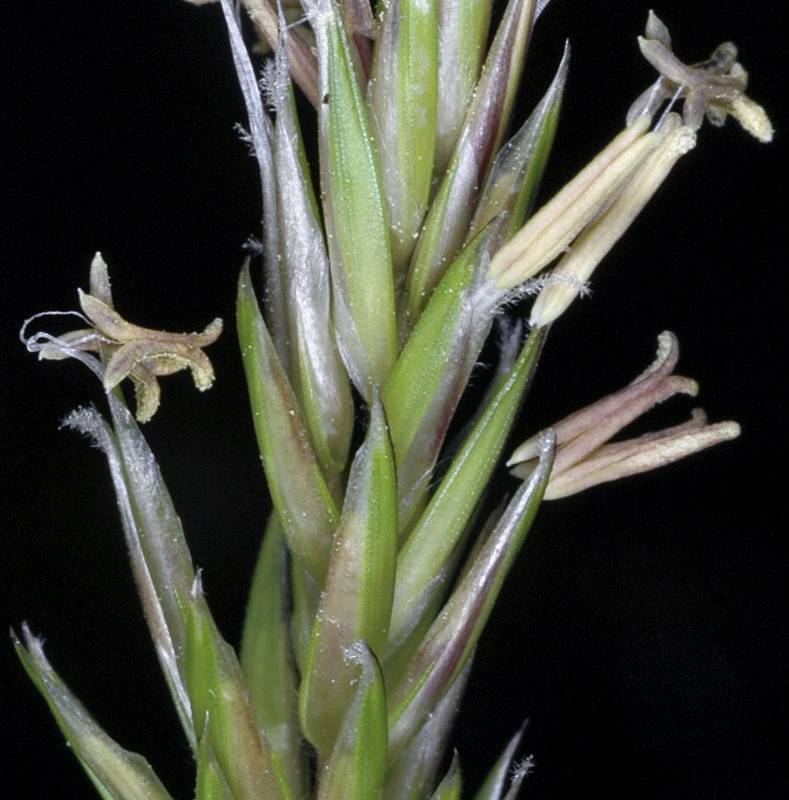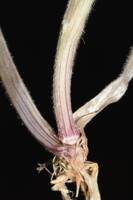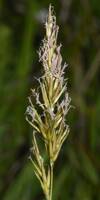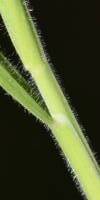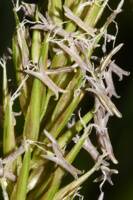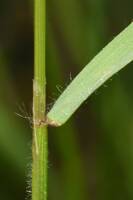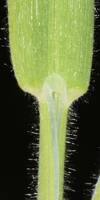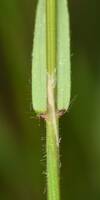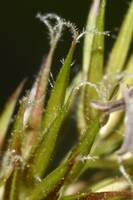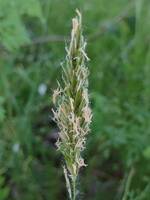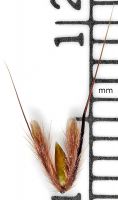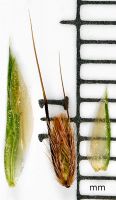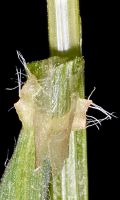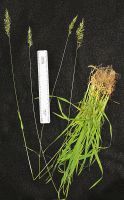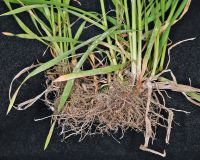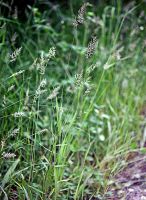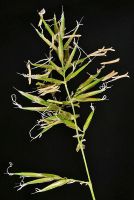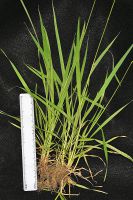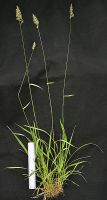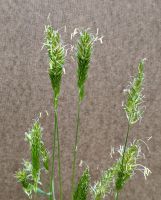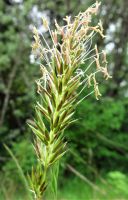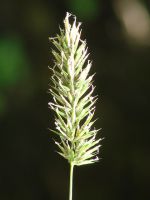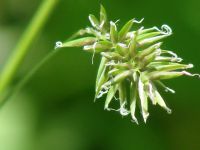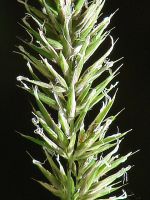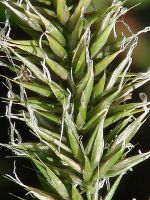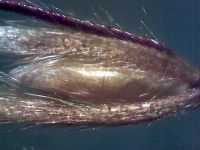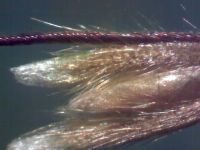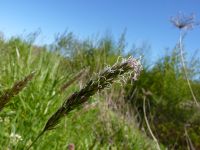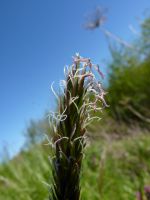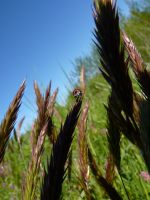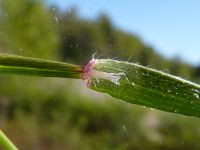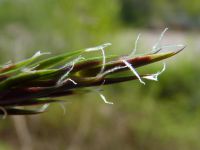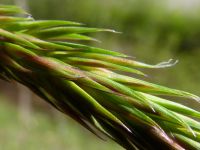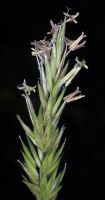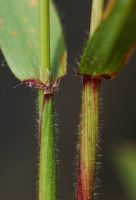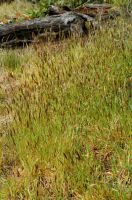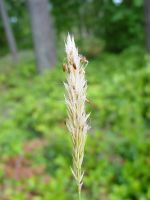Distribution: Occurring chiefly west of the Cascades crest in Washington; Alaska to California, east to the Rocky Mountains, southern Great Plains, and eastern North America.
Habitat: Roadsides, fields, meadows, prairies, balds, lawns, and other disturbed open areas at low elevations.
Flowers: April-July
Origin: Introduced from Europe
Growth Duration: Perennial
Conservation Status: Not of concern
Pollination: Wind
Tufted perennial, the culms 1-3 dm. tall, erect and hollow.
Sheaths open, usually glabrous; ligules 2-3 mm. long, membranous; blades flat, 3-7 mm. broad, with a few hairs up to 2 mm. long near the base.
Inflorescence a narrow, tawny, congested panicle 2-9 cm. long; spikelets 3-flowered, the lower 2 empty lemmas; articulation above the glumes; auricles well-developed; glumes unequal, acute, the first 4-5 mm. long, 1-nerved, the second 8-10 mm. long, 3-nerved; sterile lemmas subequal, narrow, about 3 mm. long, pubescent, the first awned from above mid-length in the back, the awn 3 mm. long, the second awned from well below midlength, the awn 7-10 mm. long, twisted and bent; fertile lemma firm, brown, glabrous, 2 mm. long; palea equal to the fertile lemma; lodicules lacking.
Single-seed grain (caryopsis).
Roots and crushed foliage often producing a fragrance similar to fresh hay with a hint of vanilla.
Publication: Sp. Pl. 1: 28. 1753. 1753.
Anthoxanthum odoratum L. ssp. odoratum
PNW Herbaria: Specimen records of Anthoxanthum odoratum in the Consortium of Pacific Northwest Herbaria database
WA Flora Checklist: Anthoxanthum odoratum checklist entry
OregonFlora: Anthoxanthum odoratum information
E-Flora BC: Anthoxanthum odoratum atlas page
CalPhotos: Anthoxanthum odoratum photos

